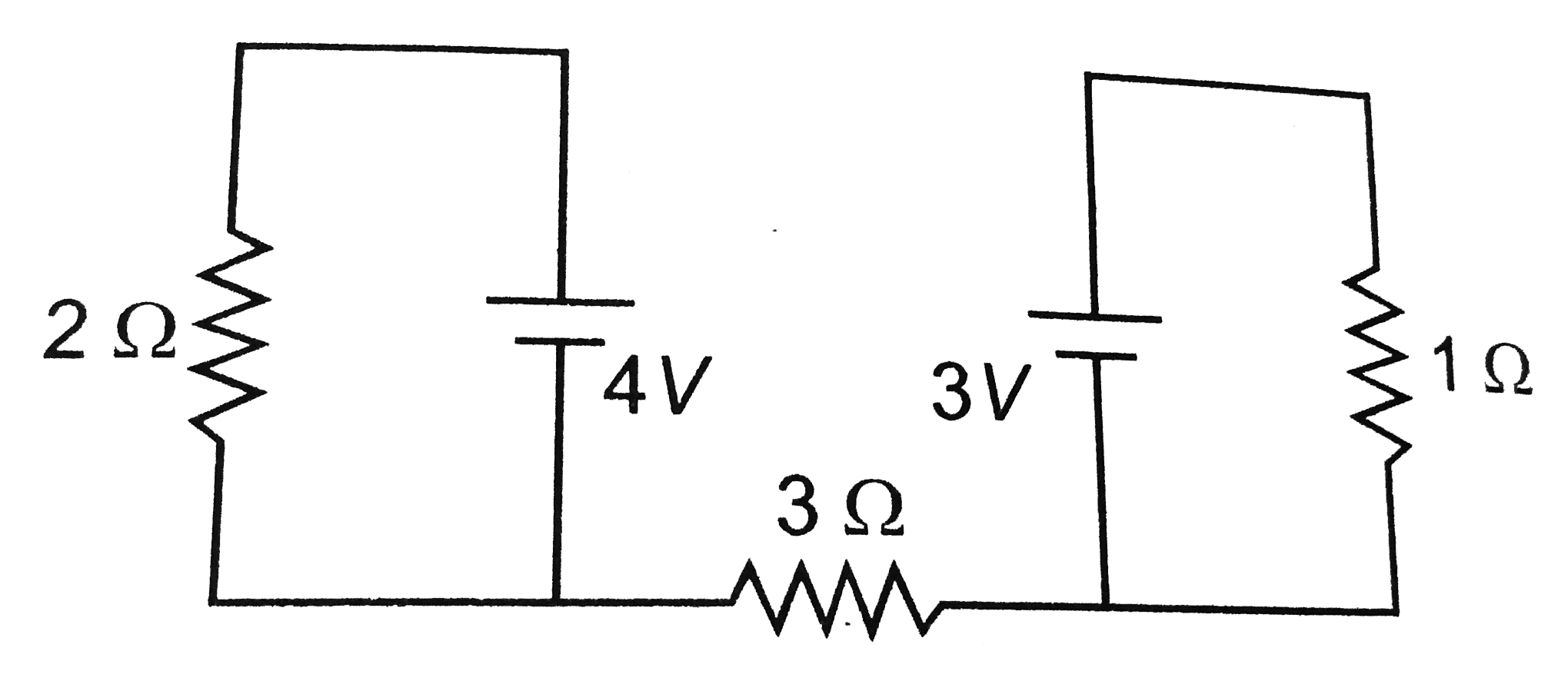A resistor circuit is constructed such that 12 resistor are arranged to form a cube as shown in fig. Each resistor has a resistance of 2Ω. The potential difference of 30V is applied across two of the opposing points as shown

In question 20, the potential difference between the points C and G is
15V
10V
20V
7.5V
The correct Answer is:A
D, B, and E are are symetrical
to A, hence potential at these
points is same. Similarly , C,
F, and H are symmetrical
to G. So potential at these
points is the same.

Resulting diagram will be
as shown : C, D, F, and E will
be at the same potential.
Potential difference between
C and G will be half to the applied potential, i.e.,
VCG=30/2=15V
Topper's Solved these Questions
- ELECTRIC CURRENT AND CIRCUITBOOK - CENGAGE PHYSICSCHAPTER - ELECTRIC CURRENT AND CIRCUITEXERCISE - Interger
8 Videos
- ELECTRIC CURRENT AND CIRCUITBOOK - CENGAGE PHYSICSCHAPTER - ELECTRIC CURRENT AND CIRCUITEXERCISE - Multiple Correct
16 Videos
- ELECTRIC CURRENT & CIRCUITSBOOK - CENGAGE PHYSICSCHAPTER - ELECTRIC CURRENT & CIRCUITSEXERCISE - Kirchhoff s law and simple circuits
15 Videos
- ELECTRIC FLUX AND GAUSS LAWBOOK - CENGAGE PHYSICSCHAPTER - ELECTRIC FLUX AND GAUSS LAWEXERCISE - MCQ s
38 Videos
Similar Questions
Knowledge Check
A resistor circuit is constructed such that 12 resistor are arranged to form a cube as shown in fig. Each resistor has a resistance of 2Ω. The potential difference of 30V is applied across two of the opposing points as shown

If we replace resistor between A and B and resistors between G and H by wires of zero resistance, then the points having the same potential are
i. D,E,C,F ,ii. A,B ,iii. G,HAOnly (i) is correct.BOnly (ii) is correct.COnly (iii) is correct.D(i), (ii) and (iii) are correct.A resistor circuit is constructed such that 12 resistor are arranged to form a cube as shown in fig. Each resistor has a resistance of 2Ω. The potential difference of 30V is applied across two of the opposing points as shown

The points having the same potential are
i. B,D,E ,ii. C,F,H ,iii. C,EAOnly (i) is correct.B(i),(ii), and (iii) are correct.COnly (ii) is correct.D(i) and (ii) both are correct.In the part of a circuit shown in fig. 5.266, the potential difference (VG−VH) between points G and H will be
 A0 VB15 VC7 VD3 V
A0 VB15 VC7 VD3 V
In the circuit shown, a potential difference of 60 V is applied across AB. The potential difference between the points M and N is

View SolutionTwo resistors of resistances 10Ω and 20Ω are joined in series. A potential difference of 12V is applied across the combination. Find the power consumed by each resistor.
View SolutionA 2-A current flows through a resistor when a potential difference of 20 V is applied across it. The resistance of the resistor is
View SolutionIn the circuit shown in fig. the cell is ideal with emf 15V. Each resistance is of 3Ω. The potential difference across the capacitoro in steady state is

View SolutionIn the circuit shown, a potential difference of 60V is applied across AB. The potential difference between the point M and N is

View Solution
